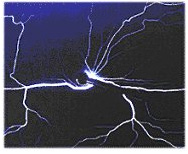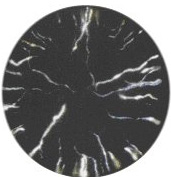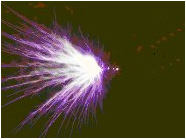Types of Electrostatic Discharges
PROPAGATING |
| Occur on insulating sheet materials with high dielectric strength when both surfaces are highly charged, but to opposite polarity. |
SPARKS |
| Occur between two conductors, e.g. conducting threads in groundable Type C FIBC and metal frame. |
CONE DISCHARGES |
| May occur when filling all types of FIBC with non-conductive powder. Space charge density increases as powder is compacted. The high field created can result in large discharges running across the cone of powder. |
BRUSH DISCHARGES |
| Occur between insulating surfaces and conductors. No evidence of igniting dusts, but may ignite sensitive gas and vapour atmospheres. |
CORONA |
| Occurs from pointed conductors or those with a small radius of curvature, e.g. fine wires or conducting threads. |
 English
English
 اللغة العربية / Arabic
اللغة العربية / Arabic
 中文 / Chinese
中文 / Chinese
 Français / French
Français / French
 Deutsche / German
Deutsche / German
 Italiano / Italian
Italiano / Italian
 日本人 / Japanese
日本人 / Japanese
 한국어 / Korean
한국어 / Korean
 Português / Portuguese
Português / Portuguese
 Pусский / Russian
Pусский / Russian
 Español / Spanish
Español / Spanish





